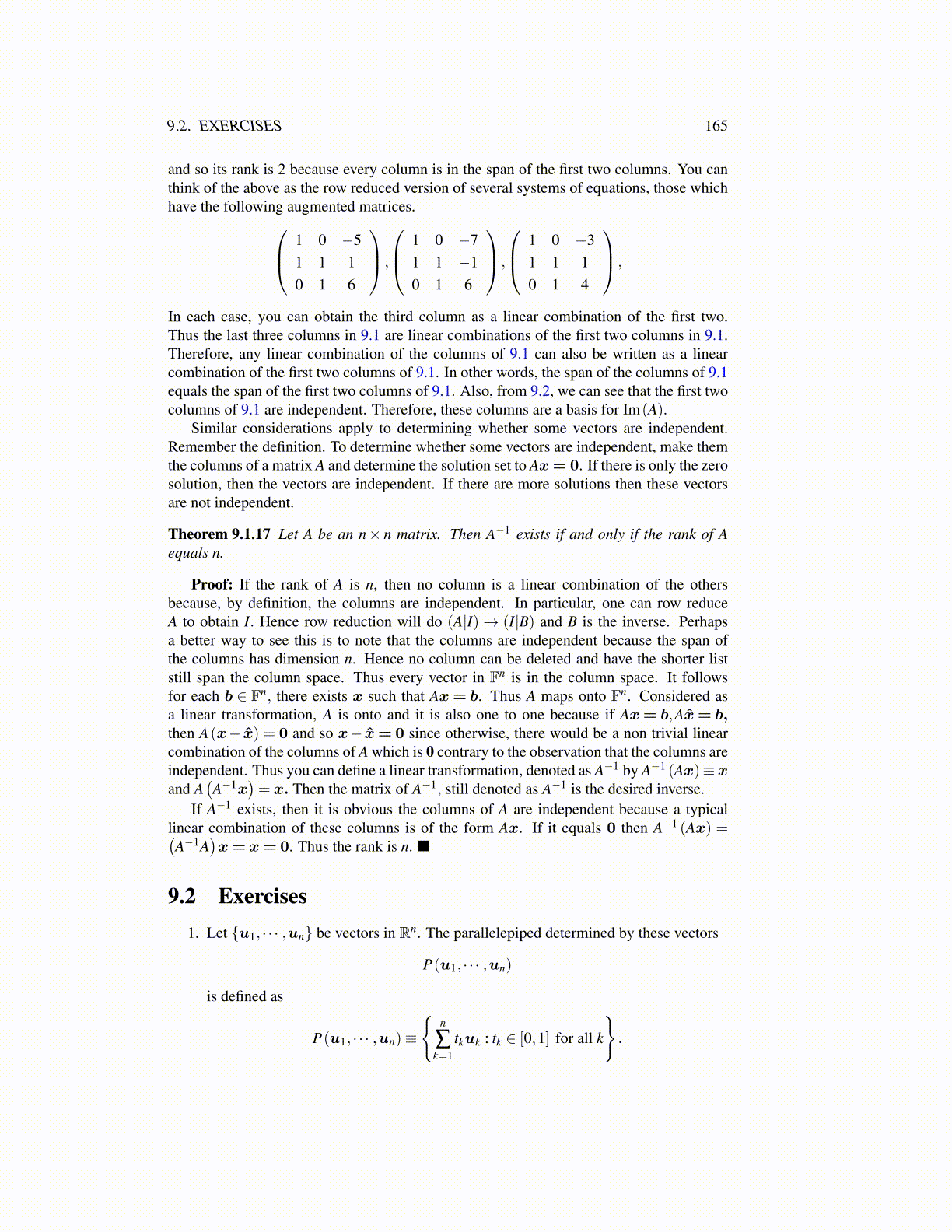
9.2. EXERCISES 165
and so its rank is 2 because every column is in the span of the first two columns. You canthink of the above as the row reduced version of several systems of equations, those whichhave the following augmented matrices. 1 0 −5
1 1 10 1 6
,
1 0 −71 1 −10 1 6
,
1 0 −31 1 10 1 4
,
In each case, you can obtain the third column as a linear combination of the first two.Thus the last three columns in 9.1 are linear combinations of the first two columns in 9.1.Therefore, any linear combination of the columns of 9.1 can also be written as a linearcombination of the first two columns of 9.1. In other words, the span of the columns of 9.1equals the span of the first two columns of 9.1. Also, from 9.2, we can see that the first twocolumns of 9.1 are independent. Therefore, these columns are a basis for Im(A).
Similar considerations apply to determining whether some vectors are independent.Remember the definition. To determine whether some vectors are independent, make themthe columns of a matrix A and determine the solution set to Ax= 0. If there is only the zerosolution, then the vectors are independent. If there are more solutions then these vectorsare not independent.
Theorem 9.1.17 Let A be an n× n matrix. Then A−1 exists if and only if the rank of Aequals n.
Proof: If the rank of A is n, then no column is a linear combination of the othersbecause, by definition, the columns are independent. In particular, one can row reduceA to obtain I. Hence row reduction will do (A|I)→ (I|B) and B is the inverse. Perhapsa better way to see this is to note that the columns are independent because the span ofthe columns has dimension n. Hence no column can be deleted and have the shorter liststill span the column space. Thus every vector in Fn is in the column space. It followsfor each b ∈ Fn, there exists x such that Ax= b. Thus A maps onto Fn. Considered asa linear transformation, A is onto and it is also one to one because if Ax= b,Ax̂= b,then A(x− x̂) = 0 and so x− x̂= 0 since otherwise, there would be a non trivial linearcombination of the columns of A which is 0 contrary to the observation that the columns areindependent. Thus you can define a linear transformation, denoted as A−1 by A−1 (Ax)≡xand A
(A−1x
)= x. Then the matrix of A−1, still denoted as A−1 is the desired inverse.
If A−1 exists, then it is obvious the columns of A are independent because a typicallinear combination of these columns is of the form Ax. If it equals 0 then A−1 (Ax) =(A−1A
)x= x= 0. Thus the rank is n. ■
9.2 Exercises1. Let {u1, · · · ,un} be vectors in Rn. The parallelepiped determined by these vectors
P(u1, · · · ,un)
is defined as
P(u1, · · · ,un)≡
{n
∑k=1
tkuk : tk ∈ [0,1] for all k
}.